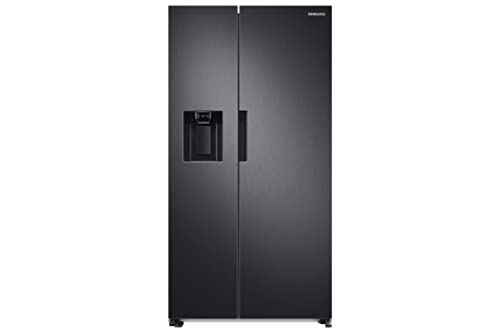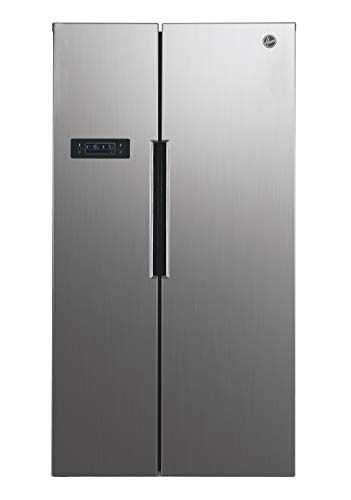10 Meetups About Freezer You Should Attend
페이지 정보
작성자 Samara 작성일24-12-16 04:38 조회23회 댓글0건관련링크
본문
 The Components of a Freezer
The Components of a FreezerFreezers ensure that temperatures stay well below freezing, ensuring the quality and safety of food. To do this, they run on a continuous cycle of compression, dissipation heat and cooling. Just like the rivers that flow down from the mountains towards the sea.
 Stock it up and shop less frequently Be sure to leave enough space to allow air flow so that your food stays frozen properly. Also, ensure that it's garage-ready and can handle normal garage temperatures.
Stock it up and shop less frequently Be sure to leave enough space to allow air flow so that your food stays frozen properly. Also, ensure that it's garage-ready and can handle normal garage temperatures.The Refrigerator Cycle
Refrigerators cool medicines, food items and electronics by transferring heat from within to the outside. This is achieved by a complex multi-component system that involves phase changes in refrigerant. The liquid turns into gas, and then returns to a liquid. This cycle of refrigeration is crucial to the operation of refrigerators and freezers. Without it, many food items will spoil and diseases could be spread. Refrigerators reduce the growth of bacteria on all foods which extends their shelf life. In medicine refrigeration, it keeps medicines and vaccines at the proper temperature to preserve their potency and effectiveness. Electronic and computer components will break down and decay faster without refrigeration.
The refrigeration cycle's basic structure is comprised of four phases which are evaporation (or vapourization) and compression, as well as condensation and expansion. The process is based on the idea that heat naturally flows from higher to lower temperatures, and is an important aspect of our everyday lives in a variety of ways. It is important to understand how air conditioners, refrigerators and other cooling devices function to keep food safe, medicines and the environment.
The compressor is the first component of a refrigerator's cooling system. It draws out superheated vapors and compresses it. When it is compressed, the temperature and pressure of the vapor increases, while its specific volume decreases. This is a positive change in energy for the refrigerant. Its kinetic energy has increased. Once the vapor leaves the compressor, it flows into a capillary tube where it is chilled by condensing it back into its liquid form.
The liquid is then pumped into evaporator coils of the best cheap fridge uk refridgerator uk (click here for info) which absorb the heat of the room. The evaporator coils are made of copper or aluminum tubes that have fins which help to disperse the absorbed heat throughout the surrounding.
When the evaporator coils cool down, the liquid refrigerant moves to the condenser coils from where it releases the heat it absorbed into cooler air in the room. Condenser coils comprise a set of silver-colored aluminum or copper tubes with fins to help disperse absorbed heat. The refrigerant then returns to the evaporator coils, where it can absorb more heat, and then repeat the process.
Cooling Pipe
Many freezers have insulated pipes in the back to ensure that cool air circulates and to keep the temperature at a minimum. The insulation is usually made of foam and securely wrapped around the pipe with fastening tags that prevent it from being removed. Insulation is usually found on pipes that transport refrigerant gasses, or on pipes that are located at the back. Insulation is an important part of the appliance since it helps to reduce wear and tear on the components and also ensures your safety when you use the fridge or the freezer.
A heat pipe is a tube that has been filled with a liquid fluid before sealing. The fluid used for sealing must have the right temperature and vapor pressure for efficient heat transfer. It is typical for the fluid used to be water, however other options are available such as ethanol, methanol and ammonia.
As heat is applied at one end of the heatpipe, the liquid working fluid begins to evaporate. This creates a pressure difference that forces it to flow into the cooler part of the pipe where it condenses. This releases the energy of vaporization, and the liquid flows back to the evaporator via capillary action.
The evaporator then has the ability to absorb more energy from the cooler and it continues to do this until the desired temperature is reached. It is important to not overheat the evaporator as this can cause damage.
A compressor compresses the vapor to create a high-pressure stream of refrigerant. This stream enters at the back of the freezer and then travels to the Evaporator. When the vapor is transferred to the evaporator, it gets chilled by cooling fins.
As it moves to the evaporator, high-pressure vapor is cooled and the resulting drop in temperature causes the ice to melt. This is an essential part of the process as it allows the melting of the ice at lower temperatures, thereby decreasing the amount of energy needed to freeze the ice.
The Evaporator
The evaporator, an essential element of the cooling cycle, is responsible to remove heat from the cooling zone. It does this by transforming the refrigerant it houses from liquid into gas which then cools air that circulates through the freezer.
The evaporator coil is comprised of a number of smaller tubes referred to as leads. This tube arrangement ensures that the liquid-vapor mix is evenly distributed and that all tubes get the same amount of refrigerant. This helps ensure that the vapor is adequately heated, allowing for faster freezing times as well as greater production capacity.
The coils that evaporate are coated with an anti-corrosive coating to aid in cooling. This helps prevent wear and corrosion from the extreme humidity and temperatures to which they are exposed on a regular basis. The coating also acts as an insulator, assisting to lower the temperature and energy that is lost when operating.
The design and the surface area of the coil can also impact its efficiency. The number of rows and the dimensions of the coil must be adjusted to maximize heat transfer between cold air and vapor. This will enable quicker freezing and greater production capacity.
The defrost cycle is an additional crucial factor to consider when evaluating the performance an IQF refrigerator. The longer the evaporator coil remains covered in frost, the more frequent it will need to undergo defrost cycles. This can cause a decrease in production and a longer downtime. This is why it's essential to select freezers uk that use efficient and effective defrosting techniques and strategies.
Plate evaporators play a vital function in the processing of juices and dairy products. They remove water from liquids in order to make them more concentrated. They are also widely utilized in sugar production, where they are used to evaporate the water content of sugarcane juice to make it crystallize into the form of a solid. Evaporators are vital in both industries to boost production and cut costs. They are extremely versatile and can be found in a myriad of industrial applications. Find out more about evaporators, their functions and working principles, and the various types that are available today!
The Compressor
The compressor is the core of every freezer. It increases the pressure of the gas vaporized that enters the cheapest fridge freezers uk from low pressure. The compressor operates by pumping air into and out of its sealed cylindrical chamber. The compressor creates pressurized air that can be used by pneumatic tools and machines.
The higher the compression ratio the greater the amount of energy the compressor requires to function. This is why it is essential to ensure that the compressor is operating efficiently to avoid expensive repair costs. In addition to reducing energy consumption and ensuring that food products are safe to eat for longer durations of time.
A compressor that isn't functioning properly could cause various issues in your refrigerator. It can, for example, cause the evaporator's temperature to rise, which can cause damage to the components of your freezer. It also can stop the refrigerant flow through the freezer in a proper manner, which can affect the ability of the refrigerator to cool its contents.
Loud banging or rumbling sounds are typical indicators of problems with the compressor. These sounds may indicate mechanical problems with the compressor. If you hear buzzing or clicking sounds, it could be an a sign that the starter relay isn't working properly. This relay is responsible for powering your compressor.
Other indicators of a failing compressor include an absence of coldness in your fridge, or an excess frost accumulation on the condenser coil. Clean the coil frequently to avoid overheating. Also, make sure that there is enough room around the compressor to allow proper airflow.
There are a few different kinds of compressors available. The screw compressor, for instance, uses two intermeshing screws to draw in refrigerant at low pressure while they rotate through the clockshaft of the motor. This type of compressor is commonly used in large commercial buildings and is renowned for durability and efficiency. Another popular choice is the rotary drum compressed. It is similar to the screw compressor, but it moves a piston into and out of an piston. The piston is moved in a way that increases pressure on both sides. A valve is then used to expand the piston to create high-pressure refrigeration.
댓글목록
등록된 댓글이 없습니다.
